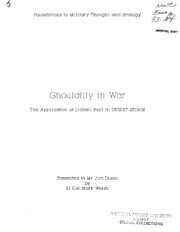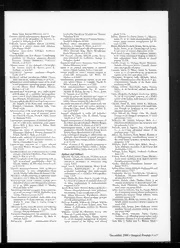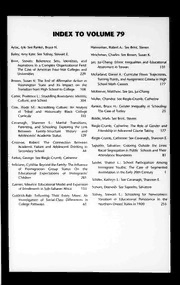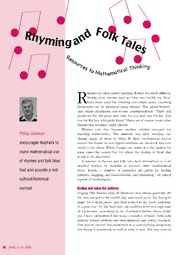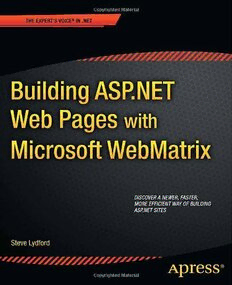
Building ASP.NET Web Pages with Microsoft WebMatrix PDF
Preview Building ASP.NET Web Pages with Microsoft WebMatrix
BOOKS FOR PROFESSIONALS BY PROFESSIONALS® Lydford Building ASP.NET Web Pages with RELATED Microsoft WebMatrix Building ASP.NET Web Pages with Microsoft WebMatrix shows you how to quickly and easily create dynamic, data-driven web sites. It gives you the knowledge and skills to create custom web applications using the revolutionary Microsoft WebMatrix plat- form. You’ll learn every part of the toolset in detail and see how you can use it to com- plete common web development tasks. Building ASP.NET Web Pages with Microsoft WebMatrix teaches you how to: • Use ASP.NET Web Pages and the powerful new Razor syntax to combine HTML, CSS and custom server-side C# code • Accept input from HTML forms and implement code to validate user input • Develop dynamic pages that interact with databases to perform create, read, update, and delete operations • Make use of the built-in membership systems to manage site membership, authentication and security • Use the WebMatrix Packages Administration tool to find and install third-party Web Helper packages that allow you to easily integrate social networking features from Facebook, Twitter, Google, Microsoft Bing, and others into your web pages This book shows you how to rapidly develop web applications without the need to learn the complex concepts and highly structured programming models required by many other frameworks. Turn to Building ASP.NET Web Pages with Microsoft WebMatrix and get started with this easy-to-learn, easy-to-use, rapid web development platform. US $39.99 Shelve in .NET User level: Intermediate SOURCE CODE ONLINE www.apress.com For your convenience Apress has placed some of the front matter material after the index. Please use the Bookmarks and Contents at a Glance links to access them. Contents at a Glance Contents at a Glance .................................................................................................. iv Contents ..................................................................................................................... vi About the Author ...................................................................................................... xv About the Technical Reviewer ................................................................................. xvi Acknowledgments .................................................................................................. xvii Introduction ........................................................................................................... xviii Chapter 1: Introducing Microsoft WebMatrix ............................................................. 1 Chapter 2: Getting Started ........................................................................................ 11 Chapter 3: C# Primer ................................................................................................ 49 Chapter 4: Working with Razor and ASP.NET Web Pages ......................................... 95 Chapter 5: Forms and Validation ............................................................................ 129 Chapter 6: Working with Data ................................................................................ 171 Chapter 7: Security and Membership ..................................................................... 225 Chapter 8: Using Web Helper Packages .................................................................. 271 Chapter 9: TechieTogs: An Example E-commerce Site .......................................... 301 Chapter 10: TechieTogs: Adding E-commerce Features ........................................ 333 iv CONTENTS AT A GLANCE Chapter 11: TechieTogs: Site Administration and Finishing Touches ..................... 377 Chapter 12: Working with Images and Video ......................................................... 419 Chapter 13: Debugging, Caching, and Deployment ................................................ 443 Index ....................................................................................................................... 479 v C H A P T E R 1 ■ ■ ■ Introducing Microsoft WebMatrix WebMatrix is a web development platform from Microsoft aimed at providing a fast and lightweight way to develop dynamic web content. The WebMatrix platform consists of many individual component parts that go together to create a complete web development environment. Throughout the course of this book you will learn about each of these component parts in some detail. This chapter is not concerned with the inner-workings of the platform or its individual components, but is focused on explaining the landscape in which WebMatrix exists. It will aim to explain the intent behind the design of WebMatrix and the problems it sets out to solve. What is WebMatrix? WebMatrix is a set of free development tools that designed to allow users to easily create dynamic, data- driven web sites and publish them on the Internet. The tools and technologies included as part of the WebMatrix platform include among others, a database, web server, deployment tool, Search Engine Optimization (SEO) tool and a server-side scripting language. Although all of these tools and technologies are available for download and use as separate entities, Microsoft has combined them into a single stack known as WebMatrix. By doing this a web developer can control the development of all aspects of a web site from within a single environment, greatly reducing complexity. This reduction in complexity realizes many benefits, not least of which are the shortening of development times and a greatly reduced entry barrier – the developer must learn to use just one integrated environment, rather than five or six separate tools. To further reduce the learning curve, many of the component parts are simplified when presented as part of WebMatrix. For example, the web server supplied by Microsoft as part of WebMatrix is a smaller, development-friendly version of their full-blown Internet Information Services web server application and the database is the Compact Edition of SQL Server, their enterprise-level relational database server. This is a great advantage to new developers. WebMatrix presents you only with what you absolutely need to create web sites, cutting away the myriad of features that are used rarely, often only by advanced users. To the more advanced developer this simplification of the development environment can be a refreshing change, especially with the current trend of huge monolithic web development frameworks and architectures. You can after all still access the component parts through their native tools should the need arise. What WebMatrix offers above all else is simplicity, ease of use and rapid development. 1 CHAPTER 1 ■ INTRODUCING MICROSOFT WEBMATRIX What is a Dynamic, Data-Driven Web Site? So far we have learnt that Microsoft WebMatrix is a great tool for creating “dynamic, data-driven web sites”, but what exactly does that mean? Well let’s take the dynamic bit first. Dynamic Web Pages In simple terms website content can be provided in one of two ways. The first, more traditional way is to store the content in static files like documents and serve them whole to the client browser. If you were to take each page of this book and store it as an HTML page which was displayed back to the user in its entirety when they requested it, you would be providing static content. A static web page retrieved by different users at different times will always be displayed in exactly the same way. A dynamic page is one that freshly produces at least some of its content programmatically when a request is made to the web server. In other words, when a user requests a page from the web server some code is run which is used to construct the output to be returned to the user. This dynamic creation of content is the polar opposite of the traditional static website. WebMatrix uses ASP.NET Web Pages to execute C# or Visual Basic .NET code on the server to create dynamic content. Dynamic pages can also be used to accept input from users, which is then used for some kind of computation. For example, a page may request a monetary value in one currency, which is then converted to another currency on the server and the result displayed back to the user. Data-Driven Pages Data-driven pages are those that interact with some kind of data store. For example, input from the user may be used to create or update database records or data may be retrieved from an XML file and formatted by code for output. By using the data stores in database tables and records we are able to produce custom page content, whether on a user-by-user or some other basis. The typical database operations conducted by web pages are Create, Read, Update and Delete, typically abbreviated as CRUD. We can produce user interfaces and server-side code which will allow site users to carry out these operations on the database in a very controlled fashion. A Pragmatic Solution In reality most web pages produced by WebMatrix, or any of the other server-side dynamic frameworks such as PHP or Ruby on Rails, are a mix of static and dynamic content. This is done primarily for two reasons; speed and simplicity. It is much simpler for a developer to create static content and it is quicker to produce and serve. Therefore it is common practice to mix the two techniques within a single page, returning dynamic, data-driven content only where necessary, amongst the rest of the static markup. Figure 1-1 demonstrates this concept by identifying the areas of static and dynamic content on a typical page from the example ecommerce web site, “TechieTogs” that we will design and build in chapters 9, 10 and 11. Content that has been created dynamically in code is highlighted; the rest of the page is constructed using static HTML: 2 CHAPTER 1 ■ INTRODUCING MICROSOFT WEBMATRIX Figure 1-1. Mixing static and dynamically (highlighted) produced content within a single web page Why Use WebMatrix? There are many great web frameworks available for developing dynamic sites, why should you choose to use WebMatrix? Well it has a lot of advantages; let’s have a look at a few of the major benefits here: • Simplicity – Simplicity is the key behind the success of WebMatrix. This is achieved largely by steering clear of some of the massive and hugely-complex architectures that have become prevalent in the last few years. You can add uncomplicated, dynamic server-side code straight inside your web pages, in a way that will be familiar to developers with previous experience of Classic ASP or PHP. There is absolutely nothing stopping you from creating a site architecture which is efficient and useful to you, but in the vast majority of small and medium-sized web applications there is simply no need to add complexity by designing some convoluted cathedral-like code structure which provides no real benefit and slows down development. • It’s easy to learn – The learning curve for WebMatrix is much less steep than the majority of modern web platforms. As you will see as you progress through this book, the simplicity of the framework makes it easy to learn and master. As long as you have a working knowledge of HTML and have done some basic programming in the past, you should have few problems learning WebMatrix. • It’s complete and integrated – Everything you need to develop a complete web site is contained within WebMatrix, a point we will prove when we develop the TechieTogs sample ecommerce application in chapters 9, 10 and 11. This includes a database, scripting language, 3 CHAPTER 1 ■ INTRODUCING MICROSOFT WEBMATRIX web server, deployment tool and development environment (the tool you will use to create the site); and they all play nicely together! This is one of the strongest selling points and very unusual amongst other platforms. • It’s all free and easy to install – As you will see in Chapter 2 – Getting Started, the whole platform is really simple to download and install using the Web Platform Installer and is absolutely free of charge. • It is part of the ASP.NET platform – ASP.NET is Microsoft’s mature and well-proven web platform. It has been around since the early nineties and has grown into a very capable technology. ASP.NET is built on the .NET Framework which means you can write code in any .NET language (C# is the most popular and is what we will use exclusively in this book) and take full advantage of the vast .NET class library to simplify many of your programming tasks. • You have complete control over the rendered output – In the past some criticism has been leveled at the ASP.NET Web Forms model for the lack of control over the final markup rendered to the client browser. WebMatrix has none of these issues. By using ASP.NET Web Pages, with the ground-breaking Razor syntax, the developer has total control over the output sent to the client. This means that rendered pages can comply with web standards and page elements are easily accessible to developers who wish to use client-side scripting in their application. • It is flexible and open – The WebMatrix development environment is equally suitable for development of PHP and ASP.NET Web Pages. Using WebMatrix you can find, download, install, configure and customize a wide variety of free open source web applications quickly and easily. These include many of the web’s most popular open source applications, including WordPress, Umbraco, Drupal, Joomla!, Moodle and DotNetNuke. • It is designed to be scalable – Two of the major parts of the WebMatrix platform are the integrated web server and database. Both of these components can easily be upgraded to higher-performance production systems should the need arise, in fact it is encouraged. The facilities to accomplish this are provided out-of-the box as part of the development environment. • It can be extended – As we’ll see later in the book, WebMatrix includes a Package Manager which allows you to download, install and customize helper code to easily add specific features to your site and simplify integration with third-party providers such as Twitter, FaceBook, Amazon, PayPal, Groupon, Windows Azure and Foursquare. The ASP.NET Platform We have mentioned that WebMatrix uses ASP.NET Web Pages to create dynamic content by executing code on the web server. ASP.NET Web Pages is the latest addition to the ASP.NET platform, which has been around since 2002. As a result the designers of the ASP.NET Web Pages platform have been able to draw on vast experience, gained over nearly a decade, to design a lightweight and fully-functional web development platform. In designing WebMatrix, Microsoft have really listened to the users in the ASP.NET and wider web-development communities, many of whom have been asking for the power of .NET and its associated libraries and infrastructure in a platform which allows simple rapid- development, ease of use, extensibility and total control over the output sent to users. 4 CHAPTER 1 ■ INTRODUCING MICROSOFT WEBMATRIX The Trend Towards Simplicity In the past few years there has been an explosion in new web development frameworks and methodologies. However, many of these new frameworks require a huge amount of infrastructure and code that is complete overkill for the development of most small websites. This unsuitability for simple web development tasks and the programming and scientific knowledge required to get started using many of these frameworks, has driven an ever-increasing trend towards simplicity. Platforms such as ASP.NET Web Pages and Sinatra, aimed at Ruby developers, are beginning to gain serious market share from the “full-stack” platforms as developers realise the benefits of using a simple framework to develop simple web sites and newcomers discover the lower barriers to entry. Figure 1-2 shows how ASP.NET Web Pages fits into the ASP.NET technology stack: Figure 1-2. The ASP.NET stack From this diagram it is clear to see that ASP.NET Web Pages is built on top of ASP.NET in the same way as ASP.NET Web Forms and ASP.NET MVC (Model View Controller). ASP.NET is in turn built on the .NET Framework. This architecture means that ASP.NET Web Pages can take full advantage of the huge .NET Class libraries which exist to enable developers to perform a wide variety of common programming tasks, which would otherwise be cumbersome, complex and time-consuming. The other advantage that becomes apparent from the architecture is that the transition for .NET developers from one platform to another is relatively straightforward. A .NET developer will have many transferable skills between the various web, desktop and mobile development frameworks, due to the fact that they are all built on the .NET Framework with which they are already familiar. 5 CHAPTER 1 ■ INTRODUCING MICROSOFT WEBMATRIX Who Should Use WebMatrix? WebMatrix is absolutely ideal for anyone wishing to create a small to medium-sized dynamic, data- driven site for deployment on a Microsoft Windows web server. Examples of people who may find WebMatrix useful include: • Web developers with previous experience of some other platform, such as ASP.NET Web Forms, PHP, Ruby on Rails or Classic ASP, who want to use a simple, modern framework for developing web applications on the ASP.NET platform. • Developers of Windows desktop applications who want to extend their existing skill set to develop a web-based application using a programming language with which they are already familiar. • Web designers who want to include some dynamic content in otherwise static web sites with a minimum of fuss. • Hobbyists, enthusiasts and students who are interested in learning how to develop web applications. They will find WebMatrix easy to learn, with rapid results and all the features they require in one place. This is by no means an exhaustive list, but does go some way to demonstrate the diverse groups of people who could benefit from this platform. This book is aimed at all of these groups and assumes no previous knowledge other than a basic understanding of HTML and Cascading Style Sheets (CSS), although some previous programming experience, however minimal, will certainly be of benefit. What Will I Learn? Over the course of the book you will learn everything you need to create fully-functional, dynamic, data- driven websites; a fact that will be proved in chapters 9, 10 and 11 when we use the skills and techniques learnt in the first part of the book to develop a fully-working ecommerce web site. The following list describes some of the major topics covered in the text: • Installation - The first step to using WebMatrix is downloading and installing it. We’ll see in Chapter 2 exactly how to achieve that to get you up and running. • The tools – We’ll take an in depth look at all of the tools supplied as part of the WebMatrix development environment. We’ll cover these throughout the course of the book as we come to use each of them. • The language – WebMatrix web sites can be developed using any of the .NET languages. In this book we will be focusing on the most popular of these, C#. Chapter 3 contains a C# Primer, designed to give you enough knowledge about the language to enable you to complete the examples in the rest of the book. • ASP.NET Web Pages – In Chapter 4 we’ll see how we can use the fabulous Razor syntax model to develop ASP.NET Web Pages. These pages allow the execution of server-side C# code to produce dynamic pages with which the user can fully interact. 6
The list of books you might like

Rich Dad Poor Dad

Better Than the Movies

Corrupt (Devil's Night #1)

The Subtle Art of Not Giving a F*ck
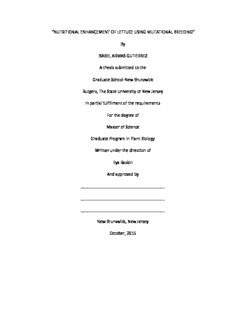
By ISABEL ARMAS GUTIERREZ A thesis submitted to the Graduate

By Irina Kossovskaia, MD, PhD, DNM

El cerebro de Buda

Pablo Escobar em flagrante

Commencement
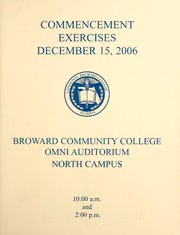
Commencement Exercises December 2006
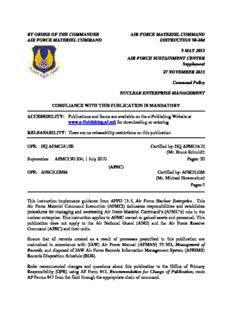
by order of the commander air force materiel command air force
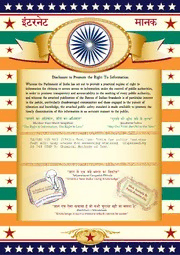
IS/ISO 105-A03: Textiles- Tests for colour fastness Part A02- Grey scales for assessing staining (Superseding IS 769
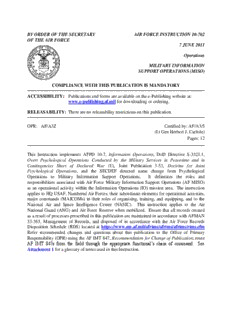
by order of the secretary air force instruction 10-702 of the
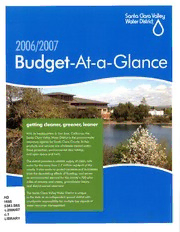
Budget-At-A-Glance, 2006-07

DTIC ADA454497: Out of Bounds. Transnational Sanctuary in Irregular Warfare

Extraordinary Gazette of India, 2006, No. 84

Dispuesta a todo

Tiempos y cosas

Organic Chemistry as a Second Language
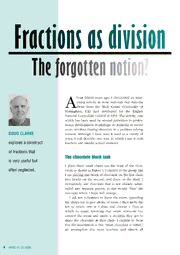
ERIC EJ793928: Fractions as Division: The Forgotten Notion?
